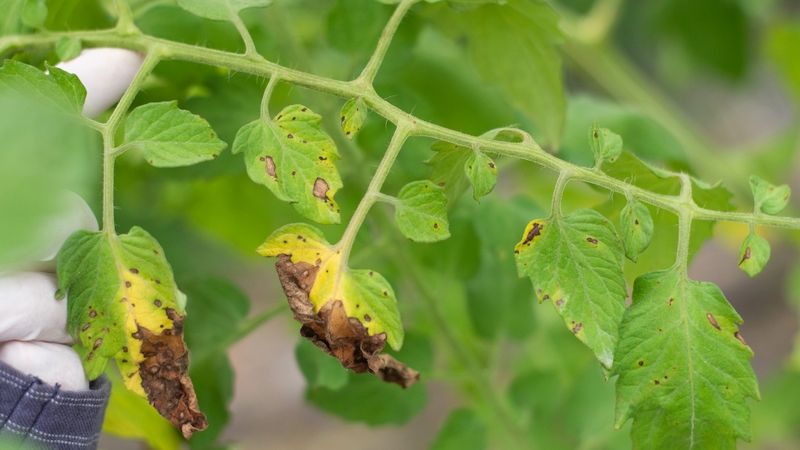The Dust Settles For Almond Growing
Air quality regulations will continue to impact the way almonds are grown, harvested, and transported in California’s San Joaquin Valley (SJV) and statewide. New and existing regulations focus on three general sources of air pollution: ozone, particulate matter (dust), and greenhouse gasses.
In California, new air quality rules aim to reduce particulate matter and diesel emissions from trucks and agricultural vehicles. Pending State Air Resources Board (ARB) rules for on-road heavy-duty diesel trucks will require the retrofit of diesel truck engines with particulate filters beginning Dec. 31, 2010. Starting in 2012, older truck engines must be replaced with lower NOx emitting motors. NOx is a precursor to both ozone and PM2.5.
Once on-road truck regulations are finalized in October, ARB will turn its their attention to similar rules for agricultural equipment, including tractors, almond harvesters, and chippers. As part of its effort to reduce diesel emissions, ARB also decided last year to mandate replacement or retrofits of diesel pumps statewide, emulating a program established for the Valley six years ago.
SJV growers have been battling dust and learning to cope with air quality rules aimed at controlling PM10 and PM2.5 dust emissions for years. The phase-out of tree removal burning in 2007 and prunings in 2010 have and will contribute to significant reductions in both PM10 and PM2.5 emissions.
Since 2005, growers in the district have submitted conservation management plans to the SJV Air Quality Control District, where they select from a menu of options for reducing PM10 dust. They are making sometimes-minor adjustments to their growing and harvesting operations that can have major impacts on air quality — oiling dirt roads, reducing their speed at harvest, or managing orchard floors to reduce dust.
Many are also purchasing next-generation equipment to reduce dust in the three-step harvesting process. Equipment manufacturers are developing more environmentally minded sweepers, harvesters, and brush shredders, and growers are embracing these new technologies.
“Air quality has become one of our major design parameters as we design new machines,” says Mike Flora of Flory Industries, which manufactures brush shredders and harvesters. Flora said the company’s newest harvesters, with slower running fans and recirculated air, have reduced PM10 emissions by 30% to 50% compared to their predecessors.
A Grower’s Experience
For the past decade, grower Fred Olmstead, general manager at Air-Way Farms, Inc., has incorporated state-of-the-art equipment to reduce dust emissions at the 1,300-acre almond operation in Fresno County. He has added mesh screens to pick-up machines and shuttle carts to direct dirt away from the air and back toward the ground. His V-shaped sweep gathers shaken almonds with a single pass using paddles and fingers — rather than air — to gather nuts off berms into a 48-inch row for pickup.
Olmstead estimates recent changes have reduced the amount of dirt taken into the huller during harvest by 25% to 30%. “And if we can lower the amount of dirt taken in, we have lowered the amount of dirt lost to the air,” Olmstead says. The almond industry for several years has invested in research to help quantify and reduce dust emissions in almond operations, particularly at harvest.
It is important for both regulators and growers to understand the true contribution of almond practices on air quality. Sergio Capareda, assistant professor in the Biological and Agricultural Engineering Department at Texas A&M University, is currently researching PM10 emission factors from almond harvest. This work will build on five years of data collected by Robert Flocchini, professor of Meteorology and Resource Science and director of the Crocker Nuclear Lab at the University of California (UC)-Davis, and Teresa Cassel of the Crocker Nuclear Lab. That research revealed that emissions factors from the different stages of harvest — which have been used to determine the main sources of PM10 dust — are not necessarily accurate. According to the data, dust emissions from pick-up machines appear to be 50% lower than initial assumptions.
Research is also helping to develop best management practices for growers to incorporate in the orchard. A project by Dan Downey and Ken Giles, both with the Department of Biological and Agricultural Engineering at UC-Davis, looks at various setups for sweepers and pick-up machines and their impact on dust. They found growers can take a few simple steps to reduce dust emissions at harvest including: setting sweeper heads to optimum levels; reducing blower passes; reducing pick-up machine speed; maintaining a clean orchard floor; and lowering the speed on separator fans. Similar to reducing spray drift, drivers can also reduce dust by blowing inward as they harvest outer rows and reducing driving speed near the end of rows.
Through these types of efforts, almond growers are helping contribute to air quality improvements, particularly in the San Joaquin Valley, which has been narrowly in compliance with federal PM10 standards in recent years. But growers must continue to find ways to further reduce their contribution, particularly as newer regulations require even more reductions in dust emission.









